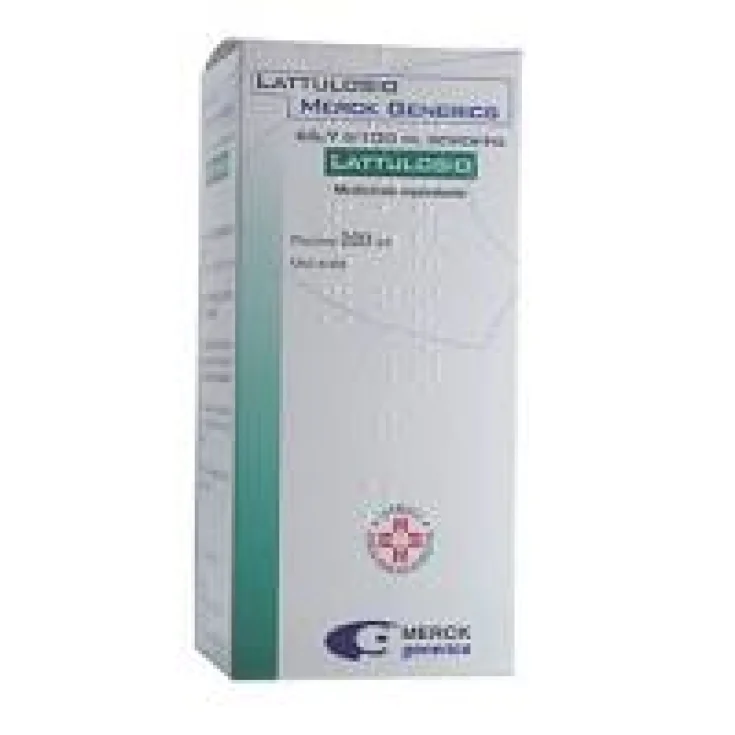Lactulose Mylan 66.7% 200ml

- Brand: MYLAN SpA
- Product Code: 029114016
- EAN:
- Availability: In Stock (evaso in 24 ore)
- 3 items
for 4,73€ each - 4 items
for 4,64€ each - 5 items
for 4,54€ each
Lactulose Mylan 66.7%
Syrup
Composition:
Active ingredient: Lactulose 66.7 g. For the full list of excipients, see section 6.1.
Excipients
Sorbic acid 0.08 g Orange essence 0.7 g Purified water to taste 100 ml
Therapeutic indications
Short-term treatment of occasional constipation.
Contraindications
Hypersensitivity to the active substance or to any of the excipients. Laxatives are contraindicated in subjects with acute abdominal pain or of unknown origin, nausea or vomiting, intestinal obstruction or stenosis, rectal bleeding of unknown origin, severe dehydration. Contraindicated in subjects with galactosemia. Generally contraindicated during pregnancy and lactation. Generally contraindicated in pediatric age.
Dosage
The correct dose is the minimum sufficient to produce easy evacuation of soft stools. It is advisable to initially use the minimum doses provided. When necessary, the dose can be increased, but without ever exceeding the maximum indicated. Oral use Adults: (1 tablespoon = 15 ml = 10 g of lactulose). Children: (1 teaspoon = 5ml = 3.3g). From 6 to 14 years: 10 g per day (3 teaspoons) as a starting dose, followed by 5 g per day as maintenance therapy. From 1 to 5 years: 3 - 6 g per day (1 - 2 teaspoons). Infants: 3 g per day (1 teaspoon). Take preferably in the evening. Laxatives should be used as infrequently as possible and for no more than seven days. Use for longer periods of time requires a doctor's prescription after adequate evaluation of the individual case.
Warnings and Precautions
Special warnings Lactulose is a poorly absorbable and non-metabolized sugar; due to the presence of other sugars such as lactose, galactose and tagatose, it is necessary to inform the doctor in diabetic patients. The abuse of laxatives (frequent or prolonged use or with excessive doses) can cause persistent diarrhea with consequent loss of water, mineral salts (especially potassium) and other essential nutritional factors. In severe cases, the onset of dehydration or hypokalemia is possible, which can lead to cardiac or neuromuscular dysfunctions, especially in the case of simultaneous treatment with cardiac glucosides, diuretics or corticosteroids. The abuse of laxatives, especially contact laxatives (stimulant laxatives), can cause addiction (and, therefore, the possible need to gradually increase the dosage), chronic constipation and loss of normal intestinal functions (intestinal atony). Precautions for use In children under 12 years of age, the medicine can only be used after consulting your doctor. The treatment of chronic or recurrent constipation always requires the intervention of the doctor for the diagnosis, the prescription of drugs and the surveillance during the course of therapy. Consult your doctor when the need for the laxative derives from a sudden change in previous bowel habits (frequency and characteristics of bowel movements) lasting more than two weeks or when the use of the laxative fails to produce effects. It is also advisable that elderly people or those in poor health conditions consult their doctor before using the medicine.
Interactions
Laxatives can reduce the time spent in the intestine, and therefore the absorption, of other drugs administered simultaneously orally. Therefore, avoid ingesting laxatives and other drugs at the same time: after taking a medicine, leave an interval of at least 2 hours before taking the laxative.
Side effects
Occasionally: isolated cramping pains or abdominal colic, more frequent in cases of severe constipation. Occasionally: flatulence.
Pregnancy and breastfeeding
There are no adequate and well-controlled studies on the use of the drug in pregnancy or breastfeeding. Therefore, the medicine should only be used in case of need, under the direct supervision of the doctor, after evaluating the expected benefit to the mother in relation to the possible risk to the fetus or infant.






